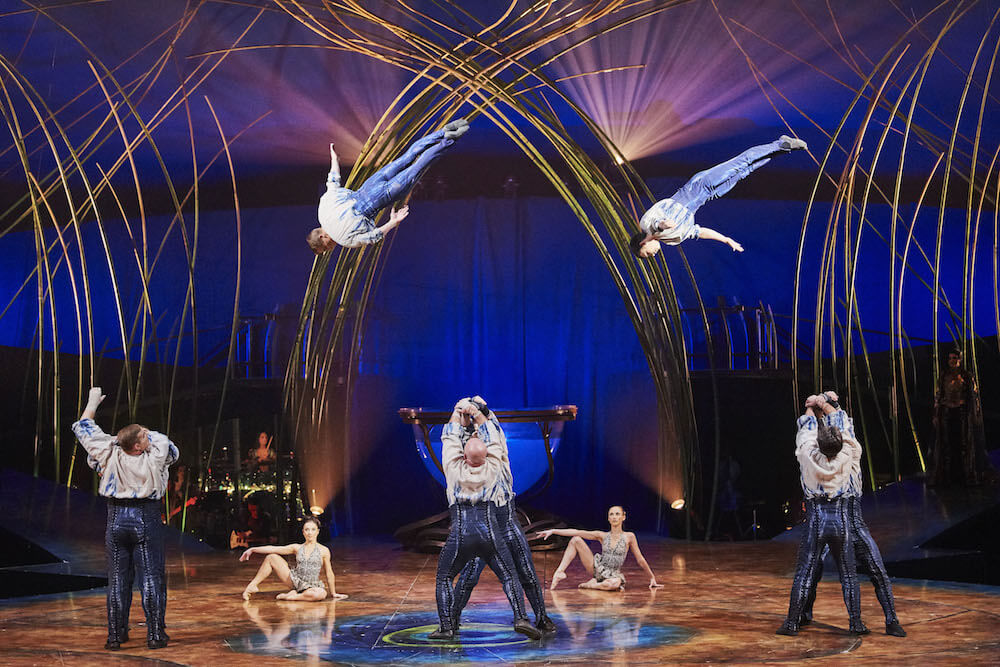It was, at the very least, uncomfortable and unfamiliar territory for Cirque du Soliel’s founder and CEO, Guy Laliberté. The French Canadian who, along with Cirque’s co-founding partner, Gilles Ste-Croix almost single-handedly reinvented the global circus industry, found himself in the position of needing to reinvent his company in the early part of this decade.
After nearly a quarter-century run that saw Cirque to Soleil grow from a couple of street performers to a global empire that entertained and amazed audiences in over 271 cities in more than 40 countries with an estimated annual revenue exceeding $810 million, Cirque du Soleil had hit a wall.
A combination of the global economic crisis of 2009, a collapsed deal with Dubai investors, and some internal mismanagement had all combined to form a perfect storm that forced Laliberté to do some serious introspection around 2012. He realized, in some ways, they had become a victim of their own success.
“We fell into the trap of thinking we could do all things entertainment-related. In the end, you realize that you don’t always have the internal expertise and that people can’t deliver on their promises,” he said in an interview with the Globe and Mail in 2014.
One can hardly blame him for thinking Cirque du Soleil was bullet-proof. There’s hardly anything in their first 25 years of existence that would make him think otherwise.
From Middle Class Life to Street Performer
Growing up in the Canadian francophone province of Quebec, Guy Laliberté did not dream of creating a performing empire. In fact, that thought had not occurred to him until he had the opportunity to travel to Europe at the age of 18.
“My first dream was to travel. I was attracted to different places, different colors of skin, different food. When I was 18 in 1977, I went to Europe with my accordion and discovered the pleasure of entertaining people,” he said in a 2011 autobiographical piece for Fortune.
He had grown up in a comfortable middle-class upbringing where the expectations were he would go to university and get a post-secondary education. He knew breaking the news of his new life direction would not be easy.
“When I came back and told my parents I wanted to be a creative producer and artist, and would not go to university, there were a lot of tears.”
It could be said that the inciting incident to the birth of Cirque du Soleil occurred in the spring of 1534. In 1983, the Quebec Government was making plans for a grand celebration the following year to honor the 450th anniversary of French explorer Jacques Cartier’s arrival in the new world.
“They asked us, the street performers, to develop an artistic concept that would carry the festivities out across the province. It was our dream to create our own circus, so I took charge and became the producer. I was able to get our first contract from the government for $1 million.”
Their performing group quickly became recognized as the hit of the festivals where they performed around the province. Laliberté named the touring exhibition Le Grand Tour du Cirque du Soleil. The name came from Laliberté’s main source of inspiration.
“Cirque du Soleil means Circus of the Sun. When I need to take time to reenergize, I go somewhere by the ocean to sit back and watch the sunsets. That is where the idea of “Soleil” came from, on a beach in Hawaii, and because the sun is the symbol of youth and energy,” he said.
A New Kind of Circus
The key to their success was more than just youth and energy. They were creating something fresh, exciting, and markedly different from the traditional model of a circus that involved trained animals and clown acts. Cirque du Soleil was wowing audiences with artistry, performance, and athleticism. They borrowed from the Moscow Circus model of having the overall show tell a story. Each of the acts would contribute to the unfolding narrative.
Just three years into their quest to make Cirque du Soleil a financial success, they faced a make or break moment in 1987.
“We were then invited to the Los Angeles Festival of the Arts by Thomas Schumacher, who was then their associate director. I made a deal, accepting to go if we were the opening act. I packed the room with celebrities and influencers like Sylvester Stallone, Arnold Schwarzenegger, and executives from Columbia Pictures. If they liked us, we could secure a U.S. tour. If they didn’t, then I would sell the big top to bring everyone back home.”
It turned out to be a huge success which then enabled Cirque du Soleil to travel the world. The international tour began in 1990 with shows in London and Paris followed by a stint in Japan. The shows combined to gross more than $2.75 million in 1990 which caught the attention of the major Las Vegas casinos. Caesar’s Palace was the first to make an offer, but the deal fell through because management simply didn’t “get” the act. Steve Wynn stepped in and booked the group at the Wynn. The rest, as they say, is Las Vegas history. In its first year, the show did 480 performances there at an average of 92% capacity. The Las Vegas residency would be the foundation for everything that came after it.
Growth and expansion continued through the 2000’s. In 2009 Cirque du Soleil celebrated its 25th anniversary and the following year they sold more than 10 million tickets at average ticket prices of $75.
Cracks in the Foundation
By that point, there were signs that the amazing growth the organization had seen was perhaps heading in a different direction. The first stumble came with the sale of 20% of the company to Dubai investors who promised to grow the organization throughout the Middle East, but the economic crisis of 2009 made it impossible for those investors to hold up their end of the deal. Unfortunately for Cirque to Soleil, they had increased the operations in anticipation of the expansion.
Making matters worse was the fact that for the first time in their history, they were experiencing creative failures with their shows. The Globe and Mail reported, “Some, like the closing of the Zed show in Tokyo following the 2011 tsunami, were unforeseen. Others were entirely avoidable. The high-priced Iris show, shown in a Los Angeles theatre, failed to attract thrifty tourists that whisked through the Hollywood district only to take pictures of sidewalk stars.”
The Road Back
If Cirque du Soleil’s initial success was built on creative genius and spectacle, their long-term stability was going to have to be built on something less flashy – sound business decisions. In 2012, Laliberté had no choice but to take a serious look at operations and see what could be done differently.
“I realized that if we didn’t commit to a serious shift in direction, we would hit a wall,” he said.
Some tactics were tougher than others. In 2013, the company laid off 400 workers which reduced their total staff to 4,000 down from the 5,000 it had been just a few years earlier. Laliberté also formed a crisis committee which took a hard look at cost inefficiencies throughout the organization.
As it turned out, they didn’t have to look too hard. There weren’t the proper spending controls in place and too many decisions were being made to further creative pet projects without enough of an eye to profitability. In short, there just wasn’t the business case for a lot of what was going on.
A New Era
In 2015, Guy Laliberté sold a majority stake in the company to private equity firm TPG Capital for an estimated $1.4 billion. According to a 2017 article for Fortune, “TPG has an extensive résumé when it comes to helping artistic enterprises grow—and it has much grander plans. Since the transaction, it has made sweeping changes, moving quickly to identify and exploit opportunities that may have been anathema to Cirque’s original managers, who preferred a more loosey-goosey approach to scaling the company.”
So, while the Guy Laliberté era may be over, the unique and brilliant artistic enterprise continues on. And no matter what happens in the future, Cirque du Soleil has already been granted a slice of immortality when it received a star on the Hollywood Walk of Fame.
How many French Canadian street performers can lay claim to that?

